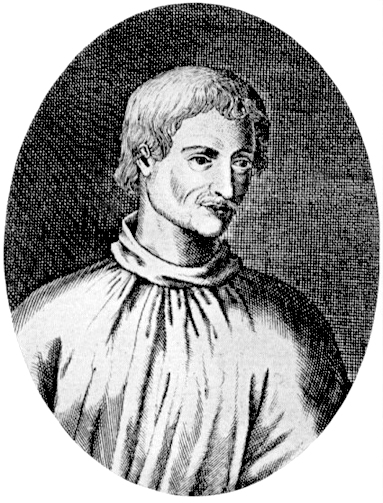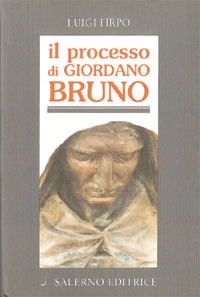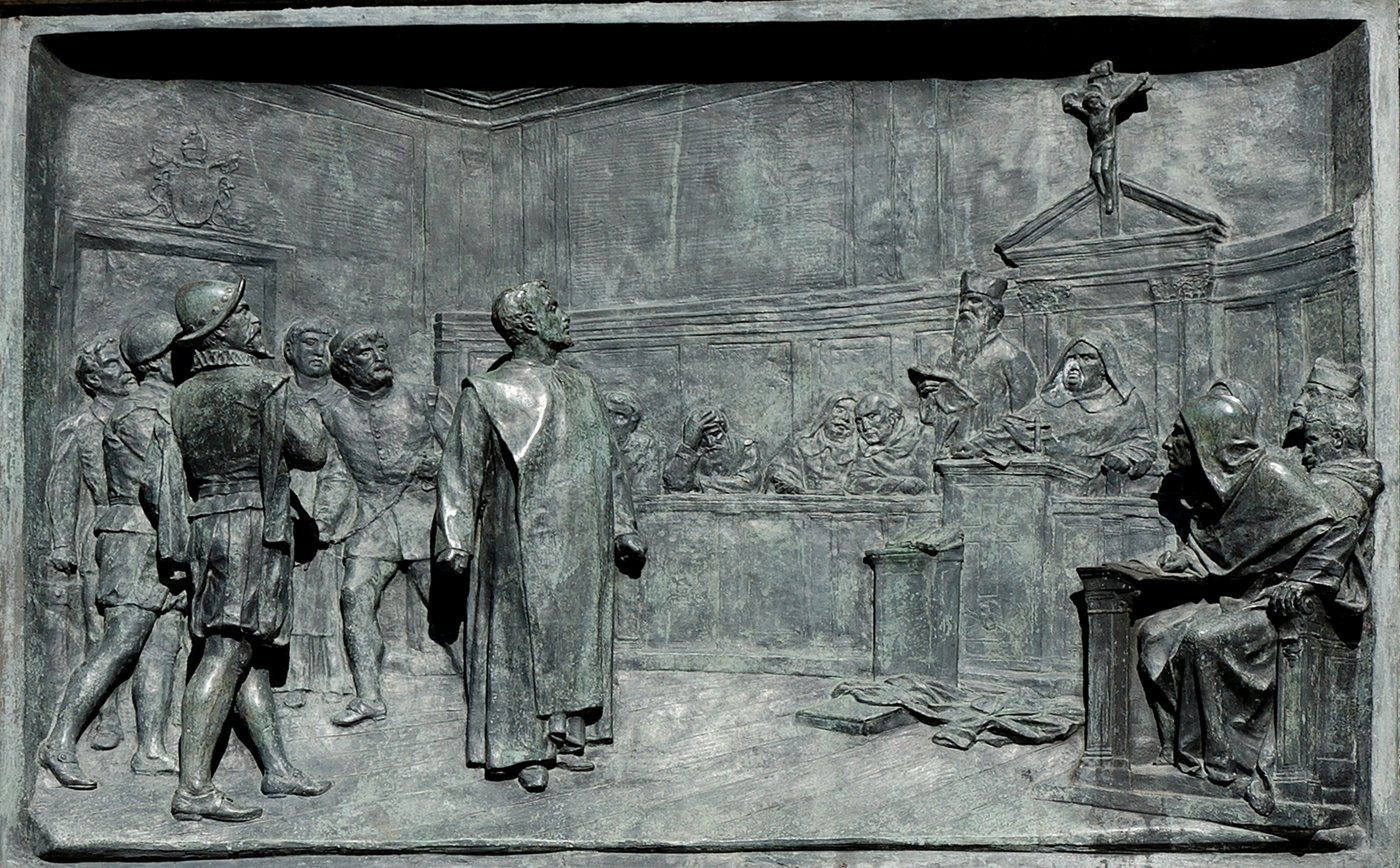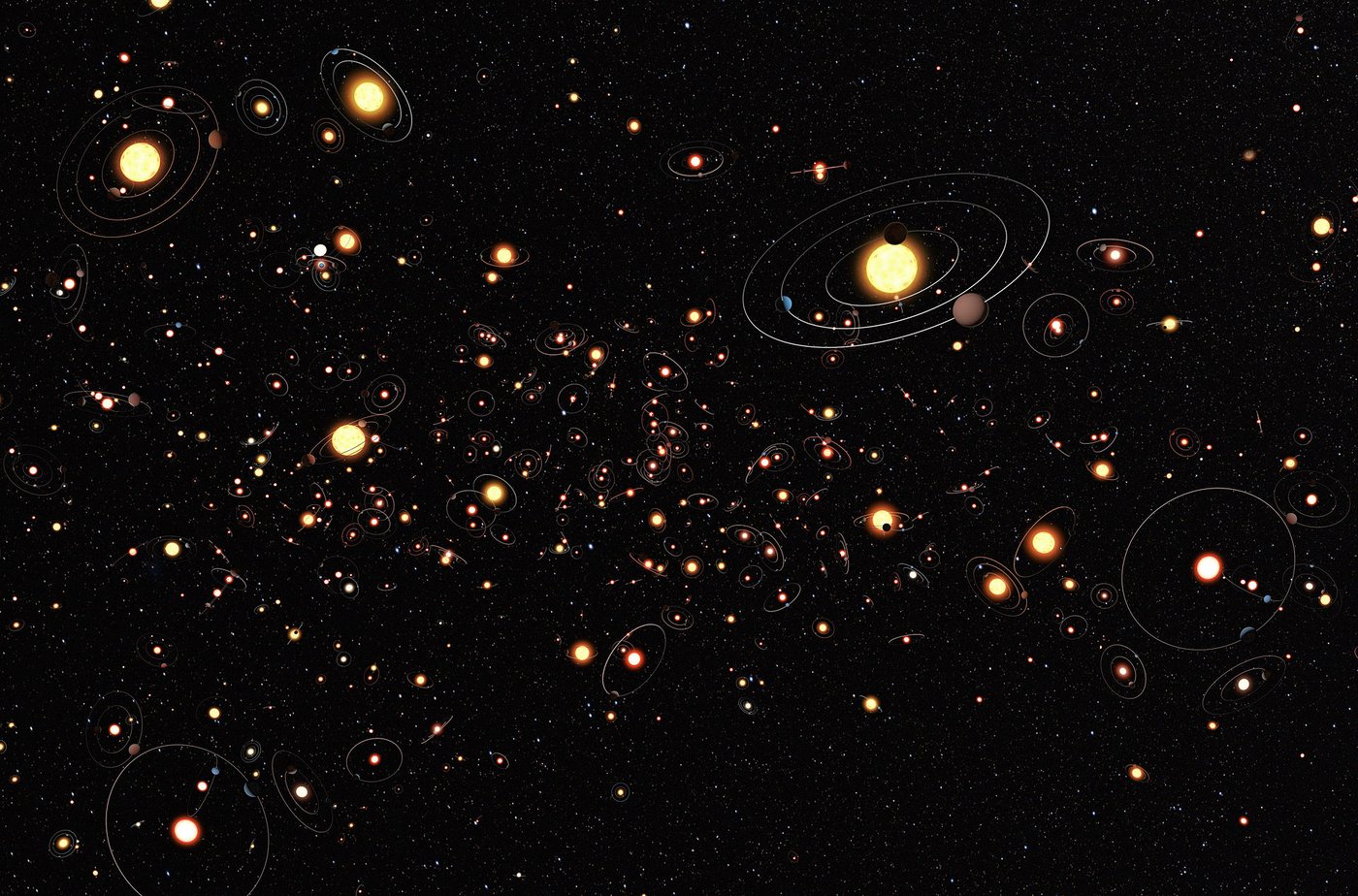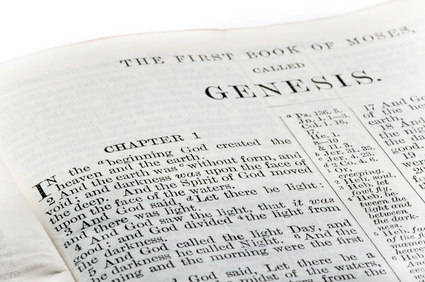Why did the Catholic Church really condemn Giordano Bruno?
Alberto A. Martinez
As an academic discipline, the history of science provides certain insights that are not just significant to history but also to discussions about science and religion. For decades, one of those claims has been the clear conviction that the Catholic Church did not condemn Giordano Bruno for any astronomical beliefs but for religious heresies. He was burned alive in Rome, in February 1600, as a heretic. As someone who debunks myths in the history of science, I too had learned that Bruno did not die because of his beliefs about Earth or the universe. However, after spending much time analyzing primary sources, in Italian and Latin, my impressions began to change.
But consider first the academic consensus. In 1908, The Catholic Encyclopedia stated “Bruno was not condemned for his defence of the Copernican system of astronomy, nor for his doctrine of the plurality of inhabited worlds, but for his theological errors...” (Herbermann, 1908, p. 17) Similarly, in 1964, historian Frances Yates declared: “the legend that Bruno was prosecuted as a philosophical thinker, was burned for his daring views on innumerable worlds or on the movement of the Earth, can no longer stand.” (Yates, 1964, 355) Yates was enormously influential in convincing many historians to construe Bruno as a Hermeticist who focused on esoteric notions and magic. Similarly, in the 1980s the historians of astronomy Steven J. Dick and Michael J. Crowe considered the question of whether Bruno was condemned for his beliefs that the planets and star systems are distant worlds and they too dismissed it as a myth. (Dick, 1982, 10; Crowe, 1986, 8) I can give multiple other examples, but I’ll specify only one more. Historian Leen Spruit is a top expert on Bruno, and in 2002, he argued that the accusation of many worlds was “too vague to be defined as formally heretical,” so instead, maybe it was viewed as merely “erroneous,” “scandalous,” or “injurious,” etc. (Spruit, 2002, 225)
In short, there was consensus that Bruno was not condemned for his cosmological beliefs. However, there was no consensus about why he was condemned. The Catholic Encyclopedia, for example, claimed that Bruno was condemned for beliefs such as “that Christ was not God but merely an unusually skillful magician, that the Holy Ghost is the soul of the world, that the Devil will be saved, etc.” Professor Yates claimed that Bruno was condemned because the Roman Inquisition considered him a Hermeticist and a magician. More recently, however, Professor Maurice Finocchiaro has rightly argued that the problem with Yates’s thesis is that “there is little trace of Hermeticism and magic in the trial proceedings.” (Finocchiaro, 2002, 78)
Missing documents?
We sometimes hear that unfortunately the documents from Bruno’s trial were lost, so we just cannot know what really happened. This impression has a seed of truth: that during the Napoleonic occupation of Rome many Inquisition documents were removed, shipped to France, and in the process, many were lost, including the file of proceedings against Bruno.
But actually, however, very many documents pertaining to Bruno’s trial do exist and have been gradually uncovered over time. We have the virtually complete transcripts of the initial proceedings in Venice, from 1592. Plus, we have a most important and revealing document, discovered in 1940, the so-called “Sommario” which is a long and systematic official summary of the ~300 folios (= 600 pages) that were transcripts of the complete proceedings in Rome until around 1598. Plus, we have numerous other individual documents, including the Censures of propositions excerpted from Bruno’s books, and a partial copy of the Sententia of 1600. Most of these documents are reproduced in Luigi Firpo's valuable book, Il Processo di Giordano Bruno (1993).
Thus, among the dozens of known accusations against Bruno, Professor Finocchiaro fairly noted that questions of Hermeticism or magic arise only in three charges: that he practiced magical arts, and that he allegedly wrongly believed that Jesus and Moses practiced magic. But such charges did not stick, since Bruno promptly and vigorously denied them.
Therefore, contrary to Frances Yates’ very influential opinion, issues of Hermeticism and magic were of minor importance in Bruno’s trial.
Why did the Romans kill Bruno?
So why did the Romans kill Bruno? In 2014, a historian of the Inquisition, Thomas Mayer, claimed causal ignorance. He admitted: “The simple fact is that we do not know why he was executed.” (Mayer, 2014, 124)
Meanwhile, I was systematically analyzing the primary sources. In Bruno’s seven-year trial, I identified fifty-four distinct accusations. Thirty-nine of them, let’s call them Type A, were alleged departures from Catholic dogma and practices, plus alleged blasphemies against God, Christ, the Virgin Mary, the Prophets, the Church Fathers, etc. The fifteen other accusations, let’s call them Type B, were about Bruno’s philosophical notions about souls, primal substance, and worlds, including the Earth.
Historians had assumed that the worst kinds of accusations were what I here call Type A: transgressions such as that Bruno allegedly questioned transubstantiation or the virginity of Mary. However, when I analyzed the evidence for each of the fifty-four accusations against Bruno, I found something surprising. The case against Bruno in terms of accusations of Type A was weak, whereas the case in terms of accusations of Type B was very strong.
At the time, the Roman Inquisition was a highly procedural and bureaucratic institution. To execute someone they relied on specific procedures. Hearsay was not enough. For example, Bruno was accused of having doubted the virginity of Mary, but only one witness made the accusation: Giovanni Mocenigo, in Venice. Nobody confirmed it. When the Venetian Inquisitors confronted Bruno about it, Bruno replied that he never spoke against the virginity of Mary, and that certainly Mary did conceive Jesus thanks to a miracle of the Holy Spirit. Likewise, Bruno did not question Mary’s virginity in any of his many books. Hence, in the seven year trial proceedings, the Inquisitors in Rome did not accuse Bruno of denying Mary’s virginity. They accused him of other things.
Similarly, some historians claimed that one of Bruno’s big crimes was that he questioned transubstantiation: that bread becomes the body of Christ in the ceremony of the Eucharist. Three witnesses accused him of this: Mocenigo, Francisco Gratianus (quoting Francisco Vaia) and Matteo de Silvestris. This sounds serious, but let me give seven objections, seven reasons to the contrary.
First, Gratianus, Vaia, and Silvestris were all prisoners in Venice, so they lacked the credibility of Mocenigo. Second, under interrogation Bruno repudiated the accusation of denying transubstantiation, saying, “I have not doubted this sacrament.” (Firpo, 1993, 265) Third, he did not deny transubstantiation in his books. Fourth, he said that he wanted to take communion.
Fifth, at that time in Rome it was not a crime to deny transubstantiation. Gaspar Schoppe was present when Bruno was condemned, because, Schoppe lived in the palace of the “supreme Inquisitor” in Bruno’s trial, Cardinal Lodovico Madruzzo. Schoppe was also present when Bruno was burned alive. In a letter describing those events, Schoppe noted that some laypersons wrongly thought that “a Lutheran” had been burned. Yet he explained that Lutherans and Calvinists were really not in any danger in Rome because the Pope had ordered that they be treated with extraordinary civility. Both the Lutherans and the Calvinists denied transubstantiation, in different ways. Why would Bruno be burned for denying transubstantiation if he did not deny it, and, denying it was not a crime?
Historians and writers had one more apparent reason to think that one of Bruno’s major transgressions was denying transubstantiation. Namely, that the issue of transubstantiation appears in the Inquisition’s condemnation (Sententia) of 1600. However, this document is incomplete, it’s only a “partial copy” of Bruno’s final condemnation. Unfortunately it omits material with an “etc.” It was common for such copies of inquisitorial condemnations, issued to the Governor of Rome, to omit the Inquisition’s list of accusations. The document gives a brief historical account of how Bruno came to be incarcerated, and it specifies that Bruno was denounced by Mocenigo (a mere layman) in Venice, with accusations such as “that you had said that it is a great blasphemy to say that the bread transubstantiates into flesh, etc.” (Firpo, 1993) This was the very first of Mocenigo’s extant and initial list (1592) of twenty-one accusations from “eight years ago,” as noted in the Sententia, yet this incomplete copy of the Sententia mentions no other initial or subsequent accusations because the document is truncated at the word “etc.”
Then, the copy mentions “these eight propositions,” clearly meaning the eight heretical propositions formulated by Cardinal Bellarmino in 1599. Thus, my sixth objection is that by conflating Mocenigo’s initial accusations of 1592 with Bellarmino’s 1599 official list of eight heresies, writers such as Ingrid Rowland mistakenly concluded that Bruno was killed partly because of a denial of transubstantiation. (Rowland, 2008, 259) Why would the top theologian, Inquisitor Bellarmino, merely echo the accusations of the layman Mocenigo? This is a mistake also because (my seventh objection) we actually have a primary source from 1599 that specifies the very first accusation in Bellarmino’s list and it was not Mocenigo’s claim of denying transubstantiation. It specifies: “prima videlicet, ubi de haeresi Novatiana.” (Firpo, 1993, 324) The so-called Novatian heresy was not about transubstantiation, it was either about the claim that the Church cannot forgive certain sins, or about bishop Novatian’s conflation of the Holy Spirit as a being created thing, like air, as argued by historian Lucia Boschetti in 2006.
But back to the point: the evidence led me to conclude that issues such as transubstantiation or Mary’s virginity were not of major importance in Bruno’s trial.
The problem with innumerable worlds
Schoppe reported that Bruno was something far worse than a Lutheran, he was a “monster,” who taught and believed opinions of the ancient philosophers. Among them, the first one listed by Schoppe was “that worlds are innumerable.” (Schoppe, 1600, 34)
Surprisingly, when I analyzed the fifty-four accusations against Bruno I found that there was far more evidence for this accusation than any other. I will review the evidence in a moment, but first I must state the most important point: that I discovered that contrary to historians’ impressions, Bruno’s belief in many worlds was officially heretical.
Decades ago, a very few historians, such as Michael Crowe, had noted that belief in many worlds had been classified as heretical by Saint Philastrius in 384 CE. Personally, I was stunned to learn this. And moreover, this classification was echoed in the early 5th century by Saint Jerome and Saint Augustine, and by Saint Isidore around 620 AD. Still, none of this necessarily meant that it was also a heresy centuries later.
Yet I discovered that during Bruno’s life, treatises of heresies also listed the heresy of believing in many or innumerable worlds, even in the 1590s. Most importantly, above all, I discovered that the Corpus of Canon Law of Pope Gregory XIII includes the heresy of “having the opinion of innumerable worlds.” (Gregory, 1591, 877) The Corpus was first published in 1582, and expanded in 1591, and it was the Catholic code or law that ruled over all Church courts and over the courts of the Inquisition.
Historians and writers had assumed that Bruno’s cosmological beliefs -- that planets are worlds like the Earth and stars are solar planetary systems like our own -- were not heresies. He didn’t defend an esoteric belief in immaterial worlds. Instead, he asserted parts of our cosmology: our acentric universe has innumerable suns, surrounded by planets, even some that may resemble our inhabited Earth.
Yet it turned out that his belief in these “innumerable worlds,” as he repeatedly called them, was very literally heretical. Many dead and living authorities had denounced it, including theologians, jurists, bishops, one emperor, three popes, five Church Fathers and nine saints. (Martinez, 2016, 358)
Why, exactly, was there a problem?
Why? Because it conflicted with the literal interpretation of Genesis, and it apparently led to horrible theological absurdities. Theologians explained: “we cannot assert that two or many worlds exist, since neither do we assert two or many Christs.” (Ricchieri et al., 1556, 715)
Completely unlike the spurious accusations such as about Christ or the Virgin Mary, Bruno actually asserted his belief in many worlds in his books. He asserted it in at least nine of his books. Bruno inferred the existence of worlds from God’s omnipotence: by having infinite power God made innumerable worlds. More than the Copernican Sun-centered universe, Bruno’s far lager view of the cosmos resembles our own: the stars are suns. And it stemmed from both astronomical and religious beliefs.
From 1595 until 1596, the Consultors of the Inquisition examined Bruno’s books until they extracted ten propositions that they censured. One of the ten censures stated: “Again, he posits many worlds, many Suns, necessarily containing similar things in kind and in species as in this world, and even men, as in folio 139 and the subsequent long digression.” (Firpo, 1993, 304)
Furthermore, during Bruno’s trial, six witnesses accused him of believing in many worlds; thirteen times, in ten depositions. No other accusation was invoked even half as much. It was the most frequently recurring charge. For example, one accuser testified that in prison one night Bruno brought a fellow prisoner “to the window and showed him a star, saying that it was a world and that all the stars were worlds.”
For an accusation to count as a formal heresy, the Inquisitors required a confession: a self-incriminating testimony showing that the accused intentionally chose to assert something that contradicts Church doctrine. Otherwise, the accused could well recant the transgression. Yet in at least four depositions, Bruno refused to recant: in his third deposition (in 1592 in Venice), the twelfth (in 1593 in Rome), the fourteenth (also in 1593) and the seventeenth (around 1598). He repeatedly insisted: Earth is a star (an archaic term for any heavenly body), and the stars include innumerable worlds.
In 1597, Bruno was confronted by Inquisitors and Consultors, including the authoritative theologian Roberto Bellarmino. The Inquisition’s record for that meeting states: Bruno “was admonished to thus abandon his delusions of diverse worlds.” (Firpo, 1993, 244) To be admonished was a serious disciplinary measure. Nineteen years later, Inquisitor Bellarmino admonished Galileo Galilei. In a book of 1594, titled On the Need for Caution When Reading Pagan Philosophers, Bellarmino had warned that “certain Catholics who are too pleased with a burgeoning Pagan sense should be subjected to censorship, by admonishing the Author.” (Crispo, 1594, xi)
And again, the Inquisitors confronted Bruno about his belief in many worlds: “About this reply he was interrogated in the 17th Deposition, but does not seem to satisfy, because he relapsed into the same reply.” (Firpo, 1993, 269) According to inquisitorial manuals, to relapse was to be a heretic. Thus, Giordano Bruno was a heretic.
Cosmological Conflicts
Right after Bruno was executed, Gaspar Schoppe penned two letters about it and in them he noted Bruno’s belief in many worlds not just once but four times. Schoppe wrote that “the Lutherans neither teach nor believe such things, and therefore should be treated otherwise. I agree with you, & therefore, precisely no Lutherans do we [Catholics] burn.” (Schoppe, 1600, 34) The clear and direct implication is that Bruno burned for his pagan, philosophical teachings, and foremost among them Schoppe listed Bruno’s belief in many worlds. Thus Schoppe used the exact wording in which it was categorized as a heresy in Latin: “mundos esse innumerabilis.”
Bruno was condemned for several heresies, but the one about multiple worlds was the strongest case against him. Still, there are other ways in which the accusations against Bruno overlapped cosmology.
The Inquisitors didn’t condemn him for believing in Copernicus. Nevertheless, Bruno’s belief in the Earth’s motion did really annoy them. In 1596, when the Consultors of the Inquisition censured ten propositions in Bruno’s books, one of them was Bruno’s claim that the Earth moves. Exactly twenty years later, in 1616, one of the same clergymen, Bellarmino, officially admonished Galileo for the same belief. Moreover, in that process, three other members of the Inquisition who weighed Galileo’s transgression had participated in the trial against Bruno.
Bruno’s belief in the Earth’s motion was not a heresy. However, it was rooted in heresies. First, it was a consequence of his belief that the stars (heavenly bodies) are worlds. Since the Earth is one such star, and all the stars move, then the Earth moves too. Second, it’s based on the idea that the Earth was a living being, a kind of animal, that it has a soul and therefore it moves. This kind of belief had been indirectly denounced as a heresy, for heavenly bodies in general, by the Bishop of Paris, Étienne Tempier in 1277: “That the heavenly bodies are moved by an intrinsic principle, which is the soul, and that they are moved by a soul and an appetitive power, like an animal.” (Tempier, 1277, 184)
But more importantly, Bruno believed that the Earth and the universe are animated by a universal soul, the anima mundi. This was a heresy if the accused claimed that the soul of the world is the Holy Spirit. And Bruno did tell his Inquisitors precisely that. In 1139, William of Saint-Thierry had denounced Peter Abelard for the belief “That the Holy Spirit is the soul of the world,” as one of thirteen heresies, “monstrous doctrines,” that were confirmed and condemned by Pope Innocent II. (Saint-Thierry, 1139, 352) Hence, even in Bruno’s time, some Inquisitorial manuals listed that heresy. For example, a Criminal Treatise on All Heresies, published in Venice in 1590, specified that it is a heresy to “assert that the Holy Spirit is the soul of the world, as taught by Peter Abelard.” (Deciani, 1590, 236)
And that is what Bruno told his Inquisitors in Venice: “Regarding the Holy Spirit . . . I construe it as the soul of the universe.” Later these words were quoted verbatim in Rome, when Inquisitors prepared the Sommario of Bruno’s trial. There again, he was interrogated about it and relapsed into that heresy: “About these replies by him, he was interrogated [again] in the 17th Deposition, folio 257, where he affirmed the same replies in which he relapses [reincidit].”
Conclusion
When I first learned about Giordano Bruno, many years ago, he was portrayed as an eccentric non-scientist who was executed by the Church because he repeatedly repudiated Catholic doctrines that had nothing to do with astronomy. That old story served a purpose: it demarcated science from nonsense, and claimed that Bruno died not for natural philosophy but for impertinence.
The historical evidence, however, supports a different account. Bruno’s cosmological beliefs about the universe, stars, planets, and the Earth did get him into trouble. Apparently he did not know that belief in many worlds was heretical, just as historians of science did not know it either, centuries later.
Alberto A. Martinez
Published February 2019
We also offer a German translation of this article.
Bibliography
Boschetti, Lucia. (2006) ‘Sul processo di Giordano Bruno: indagini attorno all’eresia Novaziana’ in Rinascimento: Rivista dell’Istituto Nazionale di Studi sul Rinascimento, 2nd ser., 46, pp. 93–130.
Crispi, Io. Baptistae. (1594) De ethnicis philosophis caute legendis disputationum. Rome.
Crowe, Michael J. (1986), The extraterrestrial life debate 1750-1900: The Idea of a Plurality of Worlds from Kant to Lowell. Cambridge: Cambridge University Press.
Deciani, Tiberio. (1590) Tractatus criminalis omnium hæresum, Vol. 1. Venice: Franciscum de Franciscis Senensem.
Dick, Steven J. (1982) Plurality of worlds: the origins of the extraterrestrial life debate from Democritus to Kant. Cambridge: Cambridge University Press.
Finocchiaro, Maurice. (2002) ‘Philosophy versus Religion and Science versus Religion: the Trials of Bruno and Galileo’ in Gatti, Hilary (ed.) Giordano Bruno: philosopher of the Renaissance. Burlington: Ashgate, pp. 51-85.
Firpo, Luigi. (ed.) (1993) Il proceso di Giordano Bruno. Rome: Salerno Editrice.
Gregory XIII, ed. (1591) Corpus iuris canonici emendatum et notis illustratum: Gregorii XIII. Pont. Max. 3rd ed. Additions by P. Lanceloti. Lyon.
Herbermann, Charles G. (1907) The Catholic encyclopedia, Vol. 3. New York: Robert Appleton.
Tempier, Étienne. (1277) ‘Sequuntur errores annotati in rotulo, 1277’ in Klima, Gyula, et al. (2007) Medieval Philosophy: Essential Readings. Malden, MA.
Martinez, Alberto A. ‘Giordano Bruno and the Heresy of Many Worlds’ in Annals of Science, 73/4 (2016), pp. 345-74.
Mayer, Thomas F. (2014) The Roman Inquisition on the stage of Italy c. 1590-1640. Philadelphia: University of Pennsylvania Press.
Mercati, Angelo. (ed.) (1942) “Il Sommario del Processo di Giordano Bruno” in Studi e Testi, Biblioteca Apostolica Vaticana. Vol. 101. Vatican City.
Ricchieri, Ludovico, et al. (eds.) (1556) Haereseologia. Basel: Henrichum Petri.
Rowland, Ingrid. (2008) Giordano Bruno: Philosopher/Heretic. New York: Farrar, Straus and Giroux.
Schoppe, Gaspar. 17 February 1600. ’Epistola, in qua haereticos jure infelicibus lignis cremari concludit’ in Pázmány, Péter. Machiavellizatio. Zaragosa: Didacus Ibarra (1621), pp. 30-35.
Spruit, Leen. (2002) ’Una rilettura del processo di Giordano Bruno: procedure e aspetti giuridico-formali’ in Giustiniani, P., et al. (eds.). Oltre il mito e le opposte passioni. Naples: Biblioteca Teologica Napolitana.
Saint-Thierry, William of, letter to the Bishop of Chartres and the Abbot of Clairvaux (1139), in LeClercq, Jean. (1987) Receuil d’études sur Saint Bernard et ses écrits, Vol. IV. Rome: Storia e letteratura.
Yates, Frances. (1964) Giordano Bruno and the Hermetic tradition, Vol. 2. London: Routledge & K. Paul.
Picture Credits
Giordano Bruno, Illustration in: Neue Bibliothec, oder Nachricht und Urtheile von Neuen Büchern. Frankfurt und Leipzig, 1715. S. 622, fig. 38 (c) Wikimedia Commons
Cover von Firpo, Luigi. (ed.) (1993) Il proceso di Giordano Bruno. Rome: Salerno Editrice.
Giordano Bruno vor der Inquisitionskommision. Historisierendes Relief von Ettore Ferrari (1848–1929) (c) Wikimedia Commons
Artist's impression of how commonly planets orbit the stars in the Milky Way (c) ESO/M. Kornmesser - http://www.eso.org/public/images/eso1204a/
Beginn des Buches Genesis aus der King James Bibel. #28996290 (c) Fotolia.com | habari

